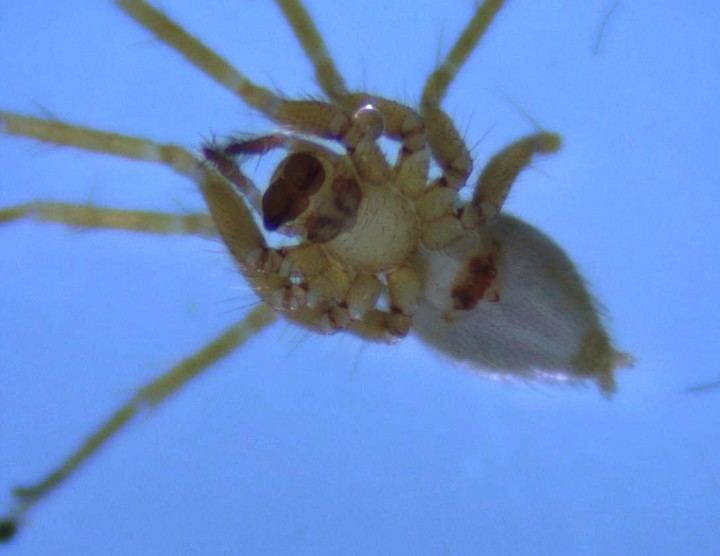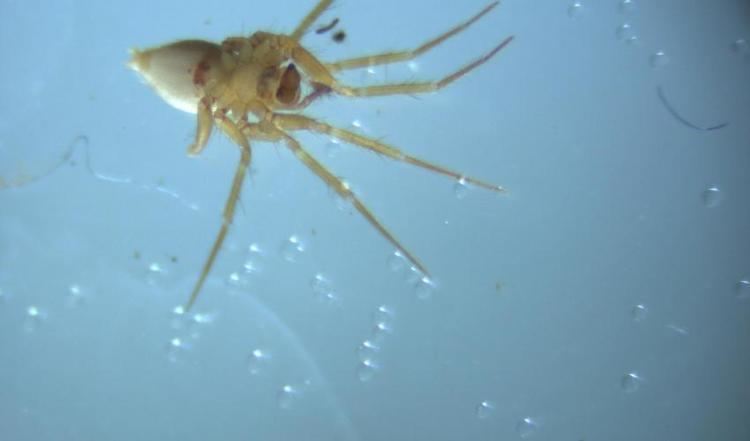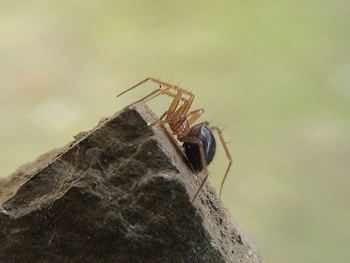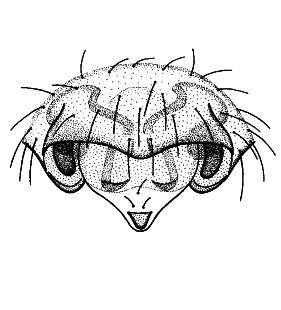Kingdom Animalia Class Arachnida Family Linyphiidae Rank Species | Subphylum Chelicerata Infraorder Araneomorphae Phylum Arthropoda Order Spider | |
 | ||
Genus Nothophantes
Merrett & Stevens, 1995 People also search for Spider, Piniphantes, Mansuphantes | ||
Nothophantes horridus the horrid ground weaver plymouth january 2016
Nothophantes is a genus of spiders in the family Linyphiidae (more commonly known as sheet weavers or money spiders). It has one species, Nothophantes horridus, also known as the horrid ground-weaver, an extremely rare species of spider endemic to the United Kingdom. First discovered in 1989, it is only known to inhabit one small geographical area of less than 1 km2, in the city of Plymouth. The species' name is derived from the Greek words notho, meaning "spurious", and hyphantes, which means "weaver"; and the Latin horridus, which means "bristly".
Contents

Distribution

Nothophantes horridus, which has a total body length of just 2.5 mm, has only been found in three limestone quarries and one industrial site, all in the Cattedown area, to the east of Plymouth city centre. One of these locations, Shapter's Field Quarry, which was the species' type locality, has since been developed by builders and is now the Plymouth Trade Park industrial estate. Because of the species' small size, combined with its habit of living deep inside cracks and crevices in the rocks and only emerging to hunt at night, it is difficult to find. First discovered in 1989, it was not subsequently found again until 1995. Until 2016 only nine specimens have ever been found, of which seven were female and two male.
The spider was found at a fourth site and photographed for the first time in 2016.
In September 2011, Nothophantes horridus was one of the subjects of BBC Radio 4’s Saving Species programme.
Threats

Plans to build 57 houses in Radford Quarry were submitted to Plymouth City Council and rejected in 2014. However, the developer behind the building proposals, Wainhomes (South West) Holdings Ltd., appealed against the council’s decision, triggering a formal planning inquiry. In 2015, an online petition to save Nothophantes horridus from extinction, started by the conservation group Buglife, was signed by almost 10,000 people. In addition, money was raised through crowdsourcing to fund further research into the species, totaling nearly £10,500. In June of that year, the International Union for Conservation of Nature (IUCN) rated the spider as critically endangered thereby adding it to the global Red List of Threatened Species. On 9 June 2015, the Planning Inspector deciding the appeal ruled that the building development could not go ahead. The main reason cited for the decision to reject the planning application was concern for the rare wildlife, and notably Nothophantes horridus. Celebrating the decision, Andrew Whitehouse of Buglife said: "What a fantastic result for wildlife. Buglife believe that to knowingly cause the extinction of a species, no matter how small, is morally wrong".


